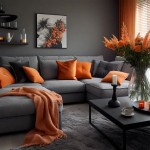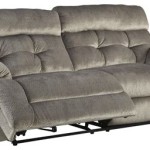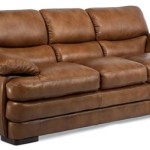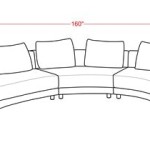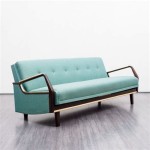Exploring the Allure of Grey Sofas: A Visual and Functional Analysis
The grey sofa has become a staple in contemporary interior design, prized for its versatility, neutrality, and ability to complement a wide range of aesthetic styles. Its widespread adoption reflects a shift toward adaptable and enduring furniture choices. This article examines the pervasive popularity of grey sofas, delves into their various shades and materials, and provides a comprehensive overview of their visual and functional advantages.
The visual appeal of grey lies in its inherent neutrality. Unlike bold colors that can dominate a space, grey recedes subtly, allowing other elements within the room to take center stage. This characteristic makes it an ideal backdrop for showcasing colorful artwork, patterned cushions, or statement rugs. The neutrality also allows for easy integration with existing furniture and décor, minimizing the need for extensive redesigns when introducing a new grey sofa.
Moreover, grey transcends stylistic limitations. It functions equally well in minimalist, modern, traditional, and eclectic settings. This chameleon-like quality contributes to its enduring popularity among both homeowners and interior designers. The inherent adaptability of grey ensures that it remains a relevant and stylish choice, regardless of evolving design trends.
Shades of Grey: A Spectrum of Options
The term "grey sofa" encompasses a vast spectrum of shades, each offering a distinct visual effect. From the palest silver-grey to the deepest charcoal, the available options cater to diverse preferences and spatial requirements. Lighter greys, for instance, tend to brighten a room and create an illusion of spaciousness, making them well-suited for smaller living areas or rooms with limited natural light. Conversely, darker greys can add a sense of depth and sophistication, creating a cozy and intimate atmosphere in larger spaces.
The selection of the specific grey shade is dependent on the desired ambiance and the existing color palette of the room. Cool greys, with bluish or greenish undertones, impart a sense of calmness and serenity. These shades pair well with other cool colors, such as blues, greens, and purples, creating a harmonious and relaxing environment. Warm greys, on the other hand, possess yellowish or brownish undertones, and tend to evoke feelings of warmth and comfort. They complement warmer colors, such as reds, oranges, and yellows, creating an inviting and cozy atmosphere.
The intensity of the grey also plays a crucial role in the overall aesthetic. A soft, muted grey offers a subtle and understated elegance, while a bolder, more saturated grey makes a stronger statement. The choice depends on the desired level of visual impact and the overall design intent.
Material Matters: Fabrics and Textures for Grey Sofas
The choice of material significantly impacts the look, feel, and durability of a grey sofa. Various fabrics offer distinct textures and properties, contributing to the overall aesthetic and influencing the level of comfort and maintenance required. Common choices include linen, cotton, velvet, and various synthetic blends.
Linen offers a natural, textured appearance, lending a relaxed and casual feel to a space. It is breathable and comfortable, making it a good choice for warmer climates. However, linen is prone to wrinkling and may require more frequent maintenance. Cotton is a versatile and durable option, known for its softness and breathability. It is relatively easy to clean and maintain, making it a practical choice for families with children or pets. However, cotton can be susceptible to staining and fading over time.
Velvet offers a luxurious and opulent texture, adding a touch of glamour and sophistication to a room. It is soft and plush to the touch, providing a comfortable seating experience. However, velvet can be more delicate and may require professional cleaning. Synthetic blends, such as microfiber and polyester, offer a combination of durability, stain resistance, and affordability. They are easy to clean and maintain, making them a practical choice for high-traffic areas. However, synthetic fabrics may not possess the same natural texture and breathability as natural fibers.
The texture of the fabric also contributes to the overall visual effect. A smooth, sleek fabric creates a modern and minimalist aesthetic, while a textured fabric adds depth and visual interest. The selection of the fabric should be carefully considered in relation to the overall design style and the desired level of comfort and maintenance.
Functional Advantages: Adaptability and Practicality
Beyond its aesthetic appeal, a grey sofa offers several functional advantages. Its neutrality makes it a practical choice for long-term investment, as it is less likely to clash with future décor changes. The versatility of grey extends to its ability to conceal stains and wear and tear, making it a forgiving option for households with children or pets. Darker shades of grey are particularly effective at masking dirt and spills, reducing the need for frequent cleaning.
The adaptability of a grey sofa also extends to its ability to accommodate various seating arrangements and configurations. It can serve as a standalone piece in a small apartment or be incorporated into a larger sectional configuration in a spacious living room. Its neutral color allows it to seamlessly integrate with other furniture pieces, regardless of their style or color.
Furthermore, a grey sofa can serve as a blank canvas for expressing personal style. By adding colorful cushions, throws, and accessories, homeowners can easily customize the look and feel of their living space. The neutral backdrop allows for experimentation with different patterns, textures, and colors, without overwhelming the overall aesthetic.
Grey sofas also offer advantages in terms of lighting conditions. They work well in both brightly lit and dimly lit rooms. In brightly lit spaces, a grey sofa can help to soften the intensity of the light, creating a more comfortable and inviting atmosphere. In dimly lit rooms, a lighter shade of grey can help to brighten the space and prevent it from feeling too dark or oppressive.
The choice of leg style and material also contributes to the functional aspects of a grey sofa. Wooden legs offer a classic and timeless look, while metal legs provide a more modern and industrial aesthetic. The height of the legs can also affect the overall comfort and accessibility of the sofa. Higher legs make it easier to clean underneath the sofa, while lower legs provide a more grounded and stable feel.
In conclusion, the enduring popularity of grey sofas stems from their unique combination of visual appeal, versatility, and practicality. Their ability to adapt to diverse styles and settings makes them a timeless choice for any home. From lighter hues that brighten spaces to darker shades that add sophistication, the range of options available caters to varied design preferences. The choice of material, from linen to velvet, further enhances the aesthetic and functional aspects of this furniture staple. Ultimately, the grey sofa stands as a testament to the power of neutrality in interior design, offering a blank canvas for self-expression and a foundation for a comfortable and stylish living space.

How To Decorate Your Living Room With A Grey Sofa

Tribeca Warm Grey Sofa Range Rowen Homes

34 Gray Couch Living Room Ideas Inc Photos Decor Modern Grey Dark

What Colours Go With A Grey Sofa Inspiration Furniture And Choice
Grey Living Room Ideas Inspiration Dfs

Grey Sofa For Living Room Design Ideas Designcafe

15 Ways To Style A Grey Sofa In Your Home Décor Aid

51 Gray Sofas To Serve As A Versatile Living Room Anchor

Tribeca Warm Grey Sofa Range Rowen Homes

What Colours Go With A Grey Sofa Inspiration Furniture And Choice


